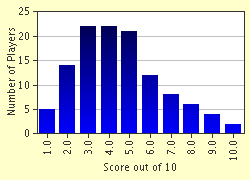Quiz Answer Key and Fun Facts
1. There were plenty of Flemings in William the Conqueror's army at Hastings. No wonder: his wife was the daughter of the Flemish count. What was her name?
2. Already before Hastings, England's and Flanders' history had been interwoven. In one of those rare periods in history that the French and the English king were mutually on good terms, they jointly besieged the town of Ghent. Legend has it that the King had sworn that he would reduce the town of Ghent to a mere cornfield.Alas for the King of England the siege fails.How do the citizens of Ghent , according to the legend, help the English King solve his problem of conscience so that he can give up the siege without having broken his oath ?
3. In 1135 after the death of Henry I Beauclerc, the first in line of succession was obviously his daughter Matilda. Alas for her, Stephen of Blois, Henry's nephew, felt men were better fitted for the job. With the help of a grandson of the Count of Flanders, William of Ypres, he managed to usurp the throne. What area of England did William get in return for his efforts?
4. When, in the twelfth century the Archbishop of Canterbury was at odds with his King, he first found refuge in Flanders, later in France. On his return he was murdered in his cathedral.What was his first name?
5. In the Middle-Ages it was not unusual for Popes to directly punish rulers who were seen as guilty of heinous or sacrilegious crimes. The killing of the Pope's representative at Canterbury a few days after Christmas in 1170 was seen as such a crime.The English King was supposed to have had a hand in it and was promptly ex-communicated.The Pope even gave his blessing to a punitive expedition set up by France and Scotland. The Flemings - always very Pope-minded- joined in with the Scottish troops. Their common battle-song was:' Hoppe,hoppe,Willekin, hoppe Willekin, England is min and thin.' Who was meant by Willekin ?
6. Baldwin IX of Flanders and the Flemish merchants were great sympathizers of Richard Coeur de Lion. They paid a large part of the ransom to deliver him from prison. In the next Crusade, the Fourth, Baldwin seems to have been rewarded for this with a very honourable appointment. What title did he get?
7. In the Third Crusade the Flemish count had played an important diplomatic role too. Philip of Alsatia had had quite a job to keep the 3 leaders of the Crusade on good mutual terms. Not surprising if you take into account that all 3 were the Leaders of a major European country. Apart from Frederic Barbarossa, the German Emperor, and Philip August, the King of France, there was the English King too. What was his name?
8. During the One Hundred Years' War Brabant had no problem to side with the English. They had no feudal ties with France. The Flemish cities tried to stay out and declared themselves neutral. Why did they not want to fight against England?
9. Staying out of a conflict like the One Hundred Years War was more easily said than done. Soon in Ghent they realised that siding with England was a better solution. Who was the 'Wise Man of Ghent' who took that decision and declared Edward III 'King of France' and 'Overlord of Flanders' ?
10. In Chaucer's Canterbury Tales there are a few references to Flanders, an area which Chaucer- as a diplomat - knew very well.In one of the tales he refers to a Fleming and says that he was 'born in a far country all beyond the sea at Poperinge in the place' - Poperinge is a neighbour town of Ypres. Which of the following characters is the one Chaucer situates at 'Pops', as Poperinge was known in First World War?
Source: Author
flem-ish
This quiz was reviewed by FunTrivia editor
bloomsby before going online.
Any errors found in FunTrivia content are routinely corrected through our feedback system.

